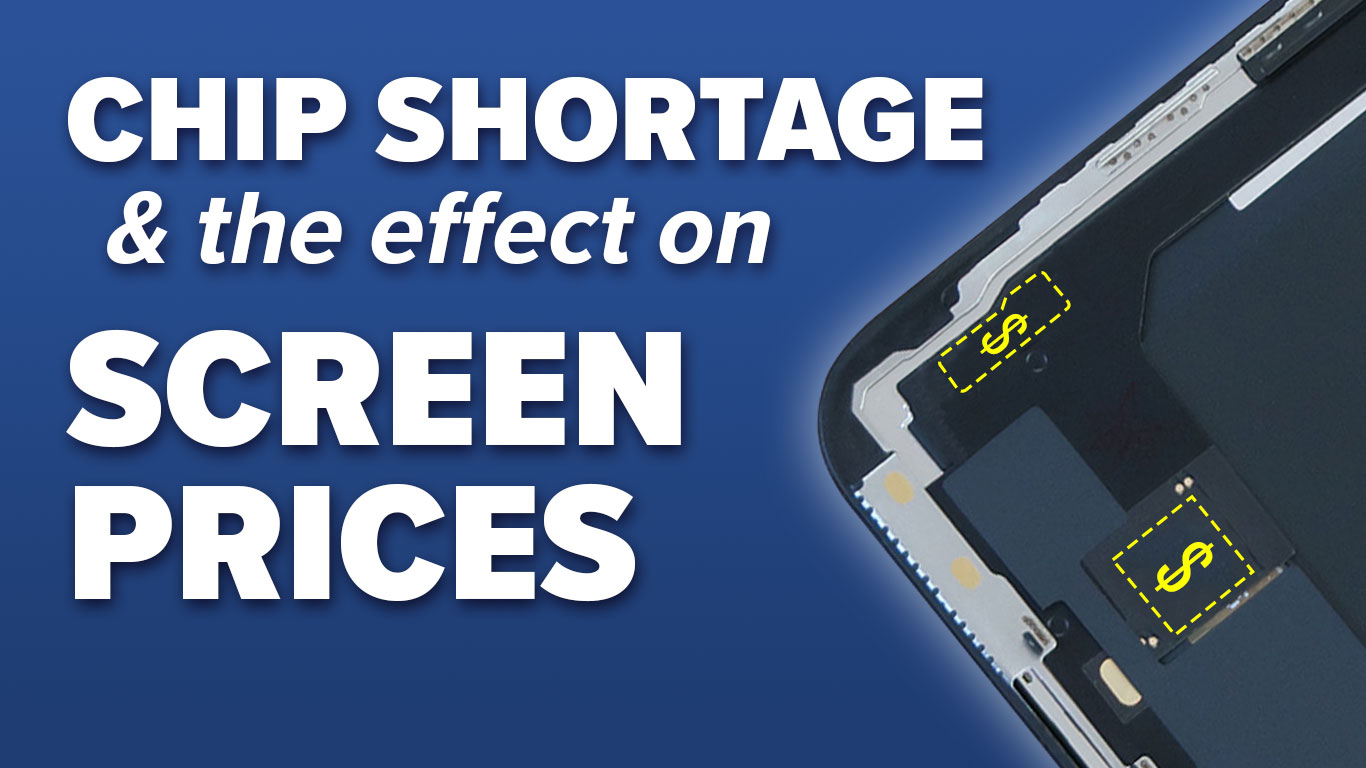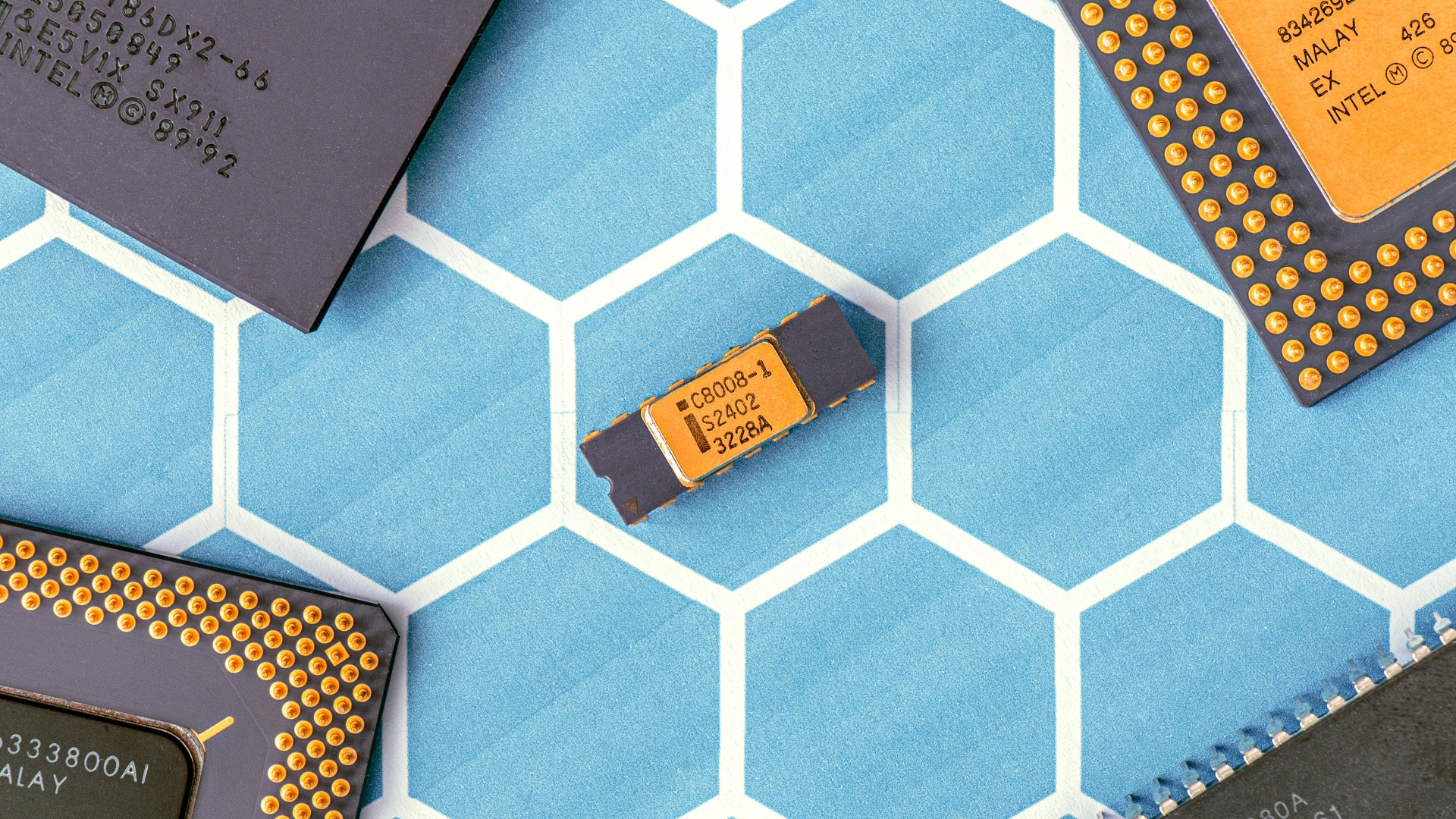We use cookies to make your experience better. To comply with the new e-Privacy directive, we need to ask for your consent to set the cookies. Learn more.
How the Global Chip Shortage is Affecting Screen Prices


If you’ve been following the news lately, you’ve likely heard of the global chip shortage that is affecting the automotive, PC, and video game industries. Unfortunately, the widespread use of microchips means that this shortage is inevitably spreading to other industries, and now that includes cell phone repair. Currently, we’re seeing higher costs for aftermarket screens, particularly those for iPhone 7 through iPhone XR. We are hoping that these increases will remain restricted to those models, however, it’s possible that more will be included if the supply issues are not resolved.
What is causing this shortage?
There are actually several different factors causing these supply constraints. As one analyst puts it, this is a perfect storm of supply and demand caused by everything from work-from-home trends, trade wars, industry fears resulting from COVID, and even bad weather. But for our industry specifically, it’s caused by competition for low-priority IC chips, and the inability of manufacturers to increase production.
Since the shortage affects the semiconductor industry as a whole, there is tremendous demand across the wide range of chip products that manufacturers produce. However, demand and profit are not spread evenly, so manufacturers are prioritizing higher-profit and higher-importance chips (such as complex microprocessors and chips ordered by high-profile clients). This results in two problems for our industry. First, new production investments are not being spent on simple chips like ICs, which means that any new demand (such as sudden growth in the auto industry) is limited to the existing supply and production capability. Second, those existing resources are going first to high-priority clients such as Apple and Samsung, and then to whichever clients are willing to bid the highest. The end result is a scarcity of IC chips that is raising the price of aftermarket screens.

Chips vary in cost and complexity. Simple chips are inexpensive to make, but they also offer the least profit and have the least demand from big clients- which is why manufacturers aren’t prioritizing them right now. Image via Jonas Svidras on Unsplash.
What can be done about this?
At the moment, there isn’t too much that can be done about the problem. This shortage is affecting a wide number of products and industries- so much so, that analysts are expecting it to last into 2022. The good news is that there are already some efforts towards addressing it. Some industries are lobbying the U.S. government to subsidize construction of new state-side manufacturing facilities, while Taiwan Semiconductor Manufacturing Company (TSMC) has already committed to increasing it’s capital spending budget to boost production. Additionally, some of the supply chain interruptions were caused by non-industry factors, such as the extreme weather in Texas, and multiple factory fires in Japan. All that being said, it will still be a while before supply chains will be able to adequately meet demand. That’s why it’s important to do everything we can to try and meet the issue head-on.
One way is to try and offset costs or introduce new revenue streams into your business. Our screen recycling program is one way to do both of those things. We offer competitive prices when it comes to screen buy-backs and any resulting credit is integrated right into your account for easy use. Check out the program page on our website if you aren’t already familiar with it. Another option is to take advantage of our volume-pricing. We are happy to work with our customers towards more competitive pricing, based on their purchasing ability. Speak with one of our sales representatives if you would like more information about that.
Lastly, we are working diligently with our vendor partners to make sure that we are well stocked, and getting the best available pricing. So while prices may continue to fluctuate for the immediate future, please keep an eye on our website for the most up-do-date pricing information. As we mentioned before, these increases are mostly visible in some of the older models at the moment (specifically i7 series through XR), but as always, we will continue to keep you updated as things progress. And of course, if you have any questions or concerns, please reach out to us. We are always doing our best to serve you and your business!









